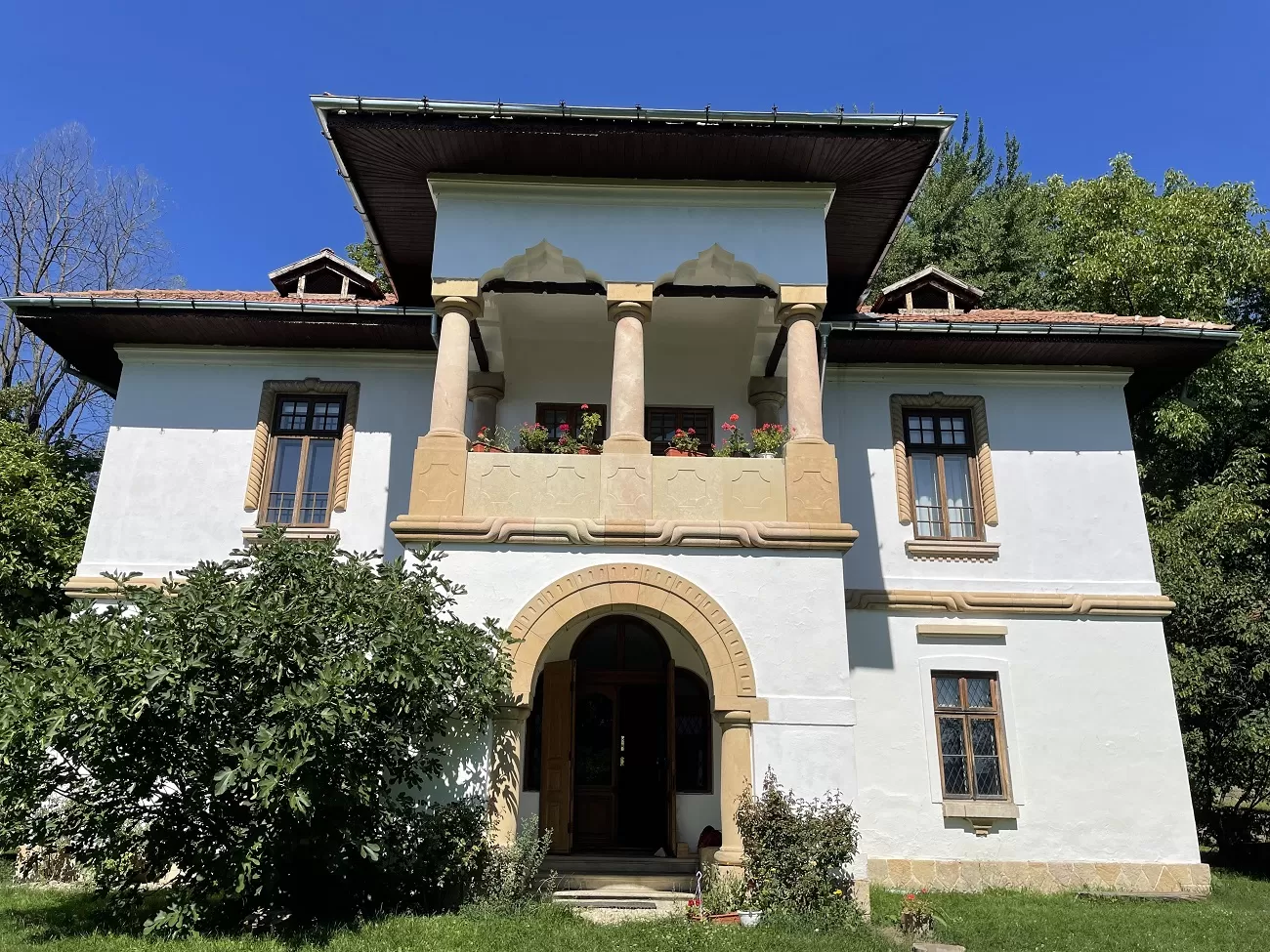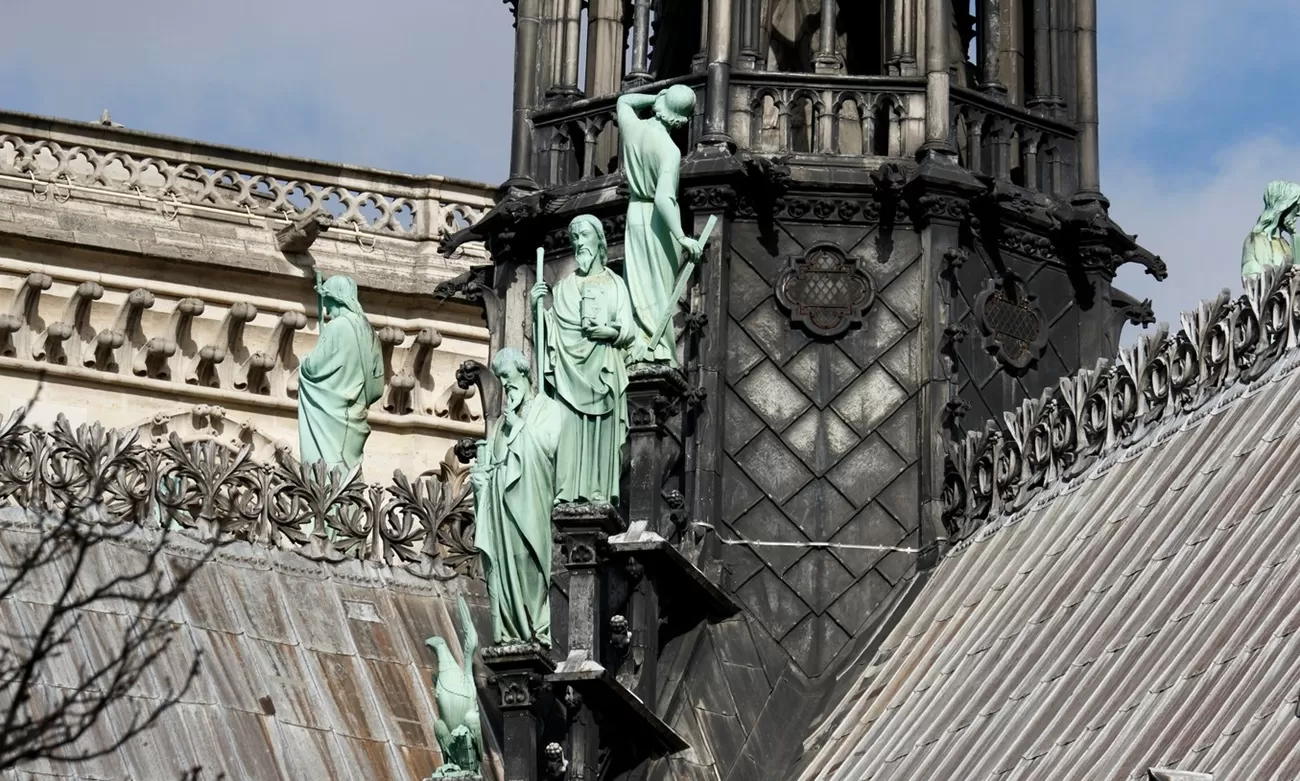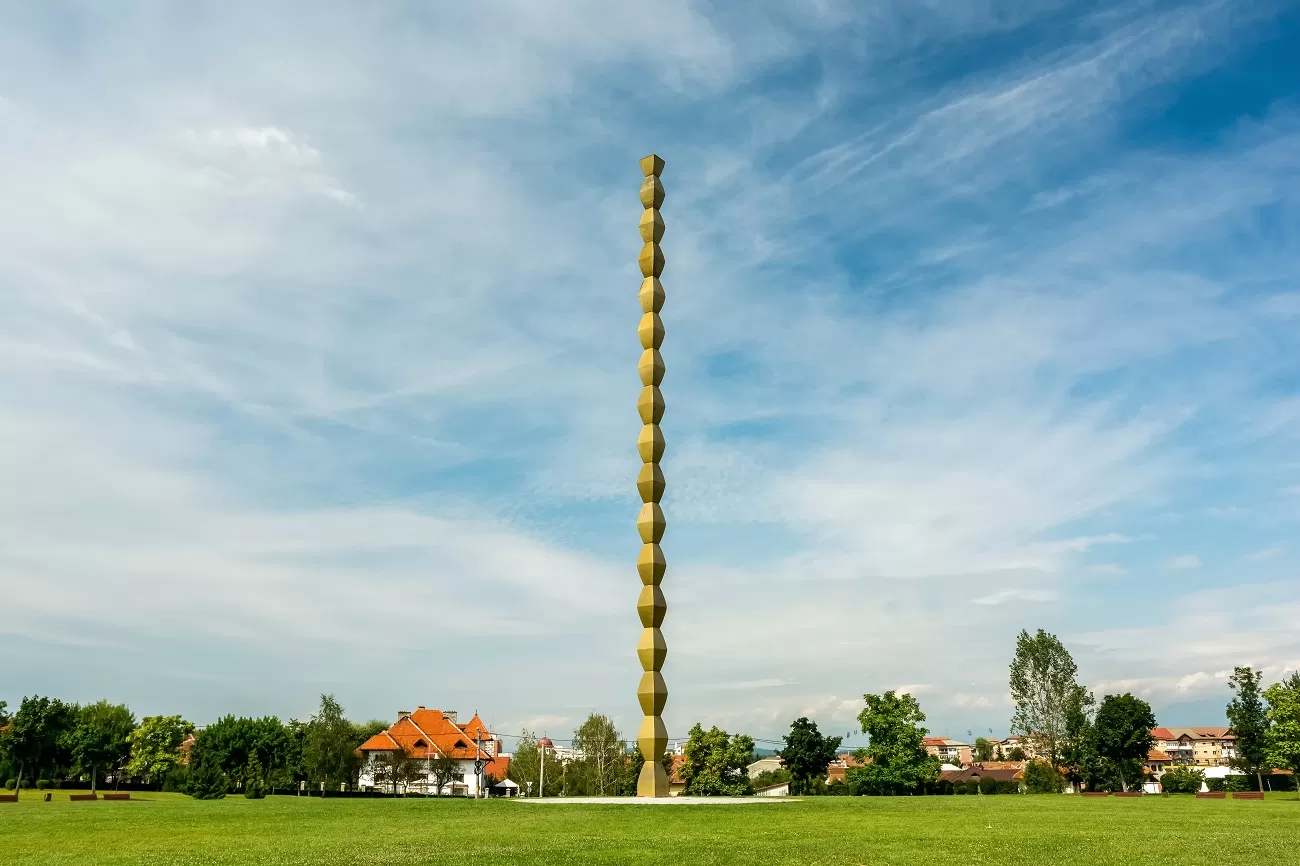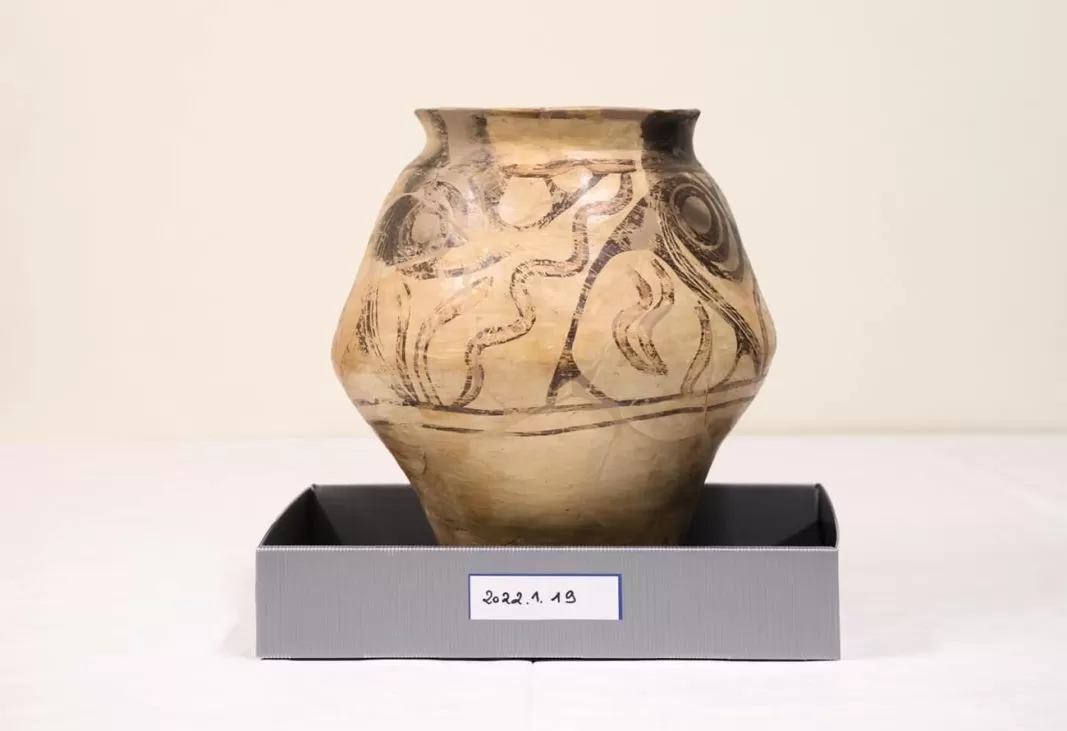
Vessel from the Cucuteni-Trypillia civilization, the oldest in the UNESCO collection, restored
The vessel specific to the Cucuteni-Trypillia civilization, loaned by UNESCO in 1971 for 99 years, was presented in Paris, at the Organization’s headquarters, after the completion of the restoration-conservation procedures, Romania’s Ambassador to UNESCO Simona-Mirela Miculescu announced.
The Cucuteni-Trypillia civilization existed in the European space, developing in the Copper Age, between 5000-3500 BC, on the current territories of Romania, Republic of Moldova and Ukraine.
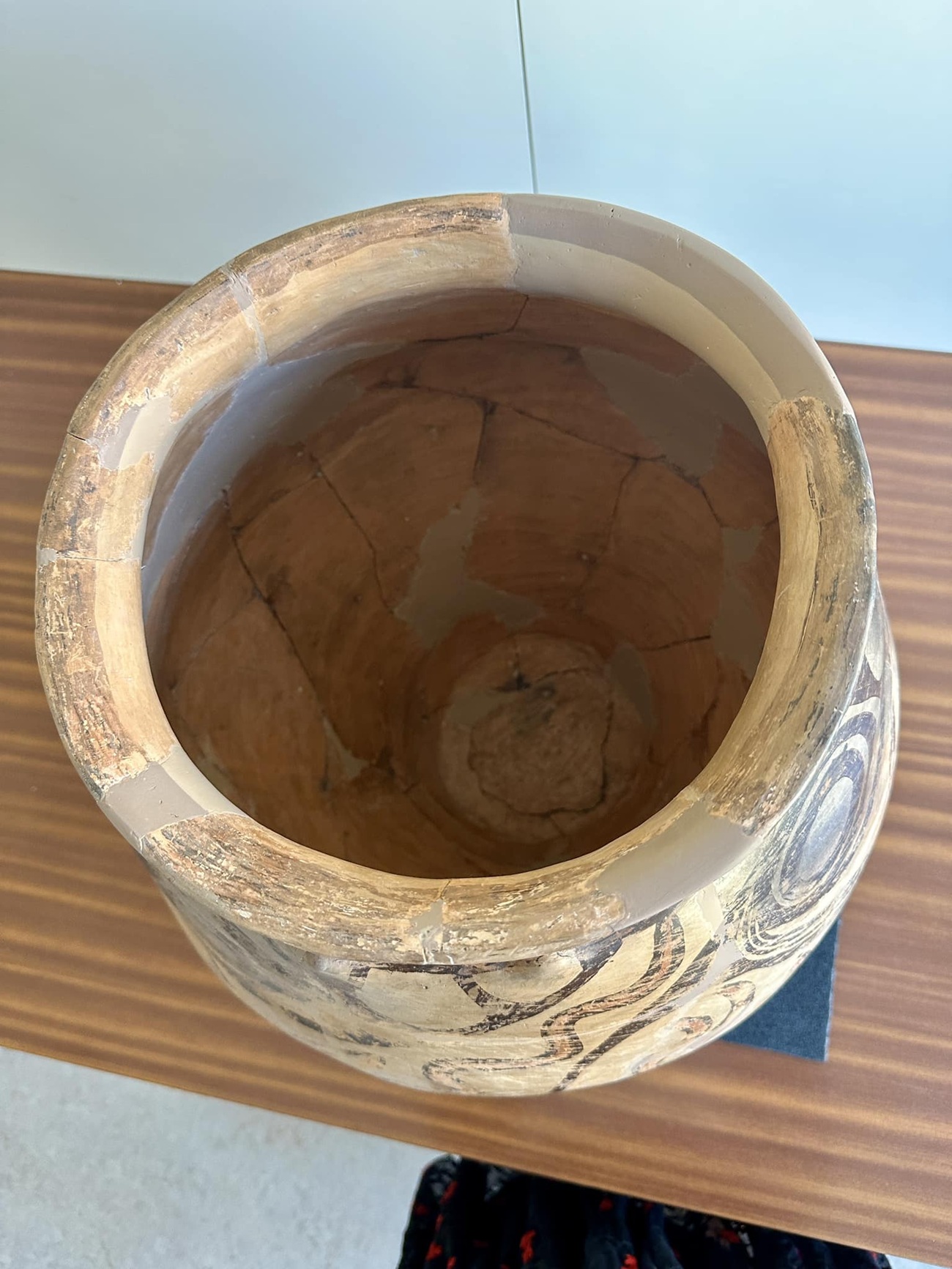
An event to promote the UNESCO Art Collection, which included a round table and guided tours to discover it, giving excellent visibility to the vessel as well as other works from Romania, was organized at the initiative of UNESCO Director-General Audrey Azoulay.
UNESCO’s Art Collection – the largest of any international organization – currently includes four works from Romania: the vessel specific to the Cucuteni-Trypillia civilization – on loan to UNESCO in 1971; the tapestry “Angels and Airplanes” by artist Mircea Cantor, donated by the Romanian State in the context of the celebration of the 65th anniversary of our country’s accession to UNESCO and inaugurated in 2023; the oil painting on canvas entitled ‘Rythmes’ by artist Viorel Mărginean (personal donation in 1993); the aluminum sculpture entitled “Les traces de l’eau” signed by Istvan Hajdu (donated by the artist in 1995).
All these works of art are currently on display in the office of Simona-Mirela Miculescu, President of the General Conference.
Mircea Cantor presented the tapestry “Angels and airplanes”
The event was attended by numerous political and cultural personalities, museum directors, as well as artists exhibited at UNESCO, including Mircea Cantor, who spoke about his own artistic creation, the tapestry “Angels and Airplanes”, donated by the Romanian state to UNESCO in 2023.
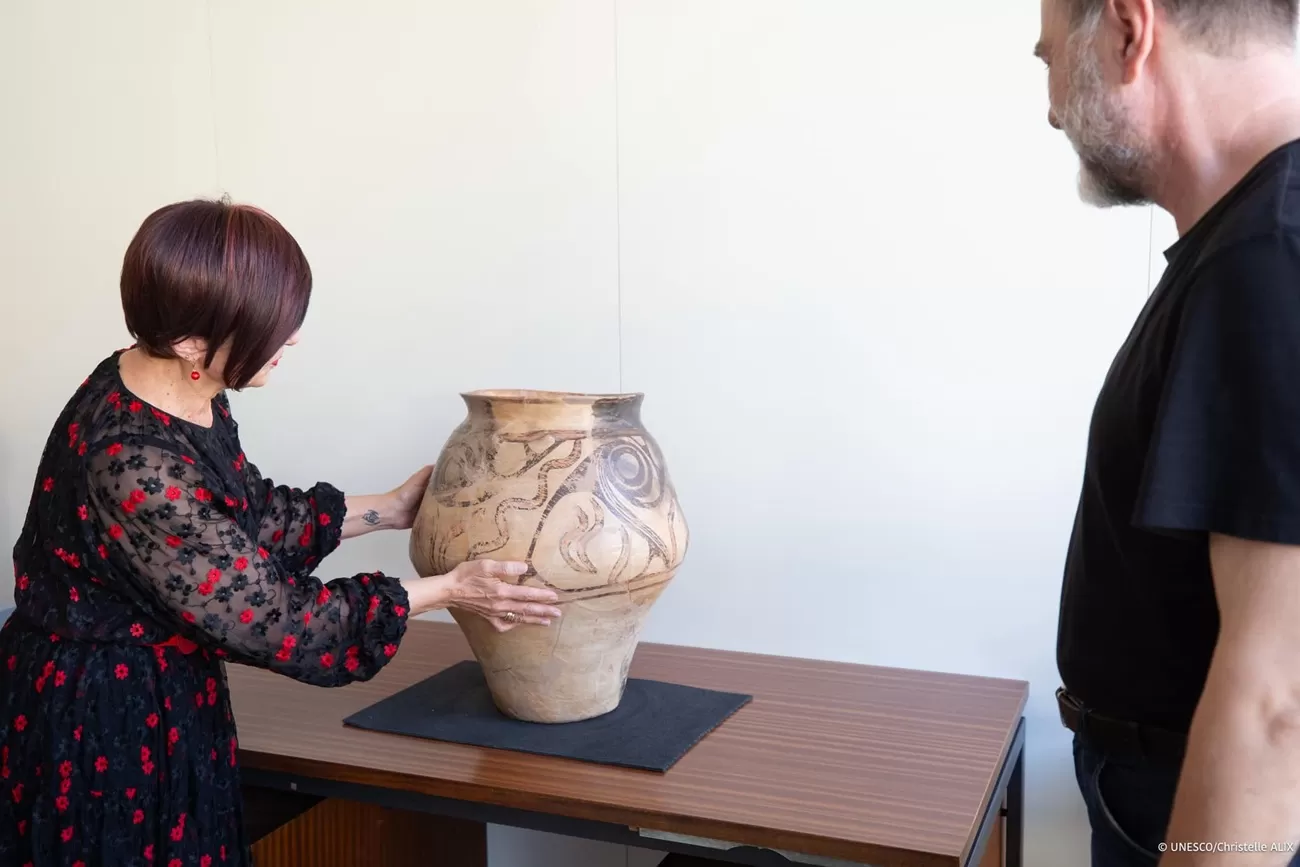
Foto: Simona-Mirela Miculescu
Simona-Mirela Miculescu said in her speech that “this UNESCO Art Collection is a living reflection of the cultural diversity and creative richness of humanity. From monumental frescoes to modern sculptures, from abstract canvases to traditional calligraphy, each work tells a story – that of a country, a people, an artist, but also of a common ideal: peace through culture. This collection makes UNESCO Headquarters a veritable museum, a place for dialog between cultures, eras and sensibilities. Its originality lies in the plurality of artistic perspectives, forms and traditions represented. It embodies unity in diversity, the harmonious coexistence of the most varied expressions of the human spirit. Creativity is a universal language capable of transcending borders and connecting peoples”.
The team of Romanian experts, consisting of Dr. Constantin Preoteasa, scientific researcher and Dumitru Bostan, restorer and plastic artist, presented, during guided tours, the recently restored vessel, as well as details about the restoration and conservation of the artifact.
During the event a special edition of the French specialized magazine Connaissance des Arts was also presented, dedicated exclusively to the UNESCO Art Collection and containing references to three of the works with Romanian authorship or included at the initiative of the Romanian state.
The Neamț County Council provided funding for the project. The Conservation Restoration Laboratory of the Neamț National Museum Complex, specialized in the Cucuteni Culture, provided the expertise and specific equipment for this project.





